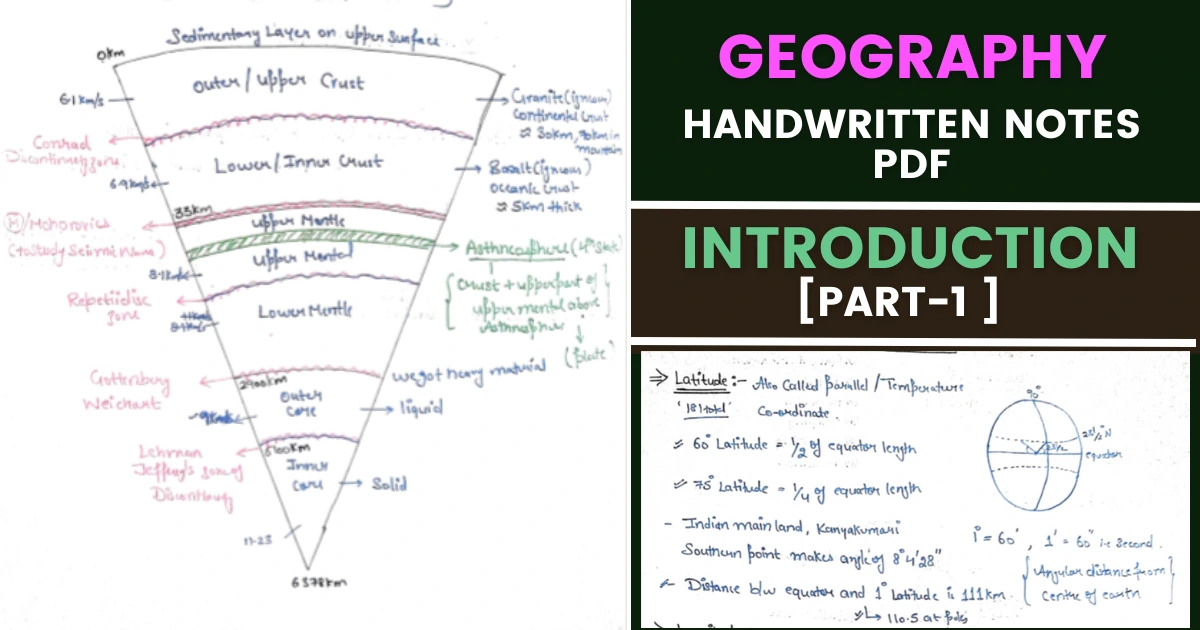Geography Handwritten Notes for UPSC Pdf in English [Part-1]
This article presents Part-1 of our Geography Handwritten Notes series, designed to be a valuable resource to enhance your understanding and grasp of these important concepts.
Geography is a crucial subject in the UPSC (Union Public Service Commission) examination, and a strong foundation in this discipline is essential for aspiring civil servants. To aid you in your preparation, we have compiled comprehensive handwritten notes covering key topics like latitude, longitude, motions of the earth, internal structure of the earth, and earthquakes.
PDF Below!
Geography Handwritten Notes for UPSC Pdf in English [Part-1]
I. Latitude and Longitude
- Latitude: Latitude is the angular distance measured north or south of the equator, expressed in degrees, minutes, and seconds. It helps in locating places on the earth’s surface and understanding climate patterns.
- Longitude: Longitude is the angular distance measured east or west of the Prime Meridian, also expressed in degrees, minutes, and seconds. It enables us to determine the time difference between different locations worldwide.
II. Motions of the Earth
- Rotation: The earth rotates on its axis, completing one full rotation in approximately 24 hours. This rotation causes day and night and affects atmospheric conditions and the Coriolis effect.
- Revolution: The Earth revolves around the sun in an elliptical orbit, taking approximately 365.25 days to complete one revolution. This motion leads to the change of seasons.
III. Internal Structure of the Earth
- Crust: The outermost layer of the earth, comprising solid rock and divided into continental and oceanic crusts.
- Mantle: Beneath the crust, the mantle is a semi-solid layer, consisting of molten rocks called magma.
- Core: The innermost layer, divided into the outer liquid core and the inner solid core. The core plays a crucial role in generating the earth’s magnetic field.
IV. Earthquakes
- Earthquakes are the result of the sudden release of energy in the earth’s crust, leading to seismic waves.
- Focus and Epicenter: The point within the earth where the earthquake originates is the focus, and the point on the earth’s surface directly above the focus is the epicenter.
- Seismic Waves: These waves radiate from the focus and can be destructive, causing a ground-shaking surface rupture and potential damage to buildings and infrastructure.
PDF of Geography Handwritten Notes
Geography-Handwritten-Notes-UPSC-PDF-in-EnglishConclusion
A strong grasp of geography is essential for success in the UPSC examination, and these handwritten notes provide valuable insights into key topics. Understanding latitude, longitude, motions of the earth, internal structure, and earthquakes is fundamental to mastering geography.
Stay tuned for Part 2 of our Geography Handwritten Notes series, where we will delve further into other significant geographical concepts.
Thank You!


Useful article, thank you. Top article, very helpful.